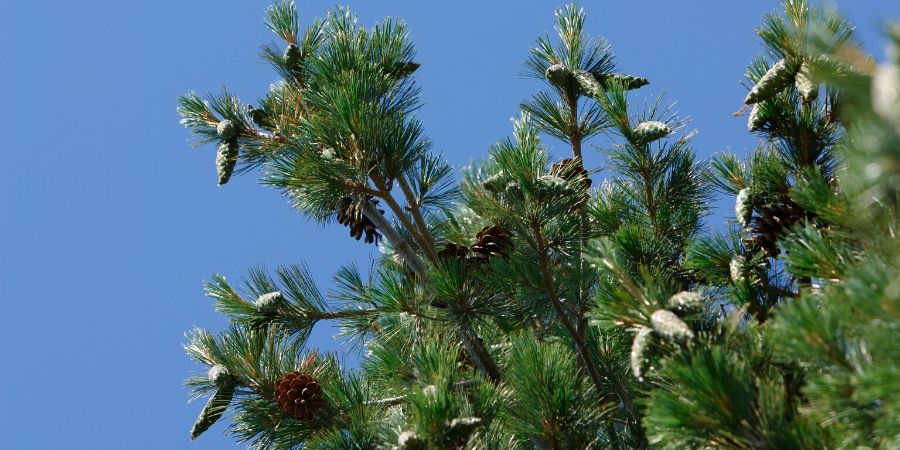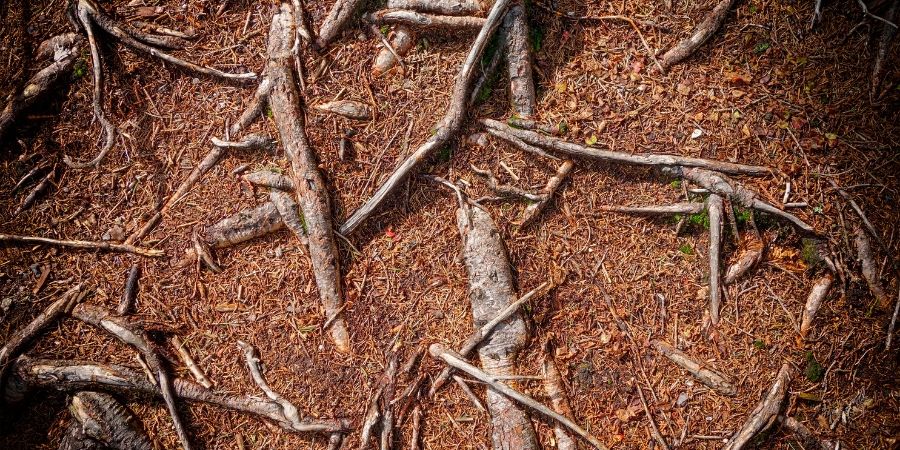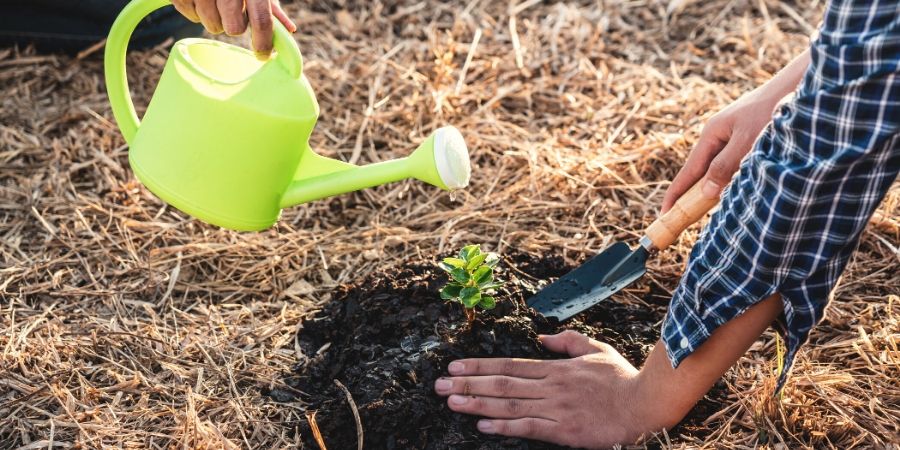How Trees Help Manage Water in Your Lawn and Landscape
- horticulturist and gardening expertApril 18, 2020
Major storms and flooding have become more frequent in recent years. These weather extremes make planting trees even more important than ever before. This connection between trees and the environment has been recognized and celebrated throughout history. National Arbor Day is most likely the one you are most familiar with and hopefully still celebrate.
This national tree planting holiday was the vision of Julius Sterling Morton. He was a journalist in Nebraska and promoted environmental stewardship including planting trees. Born in Detroit, he missed the trees of his home state when he moved to the Nebraska prairieland. Morton recognized the importance of planting trees for windbreaks, fuel, food, building materials and shade. He believed “Each generation takes the earth as trustees”. His efforts resulted in over one million trees being planted on the first Nebraska Arbor Day celebration in 1872.
National Arbor Day is celebrated on the last Friday in April. All fifty states, Puerto Rico and some US territories celebrate this holiday on an appropriate date for planting trees. Visit www.arborday.org to find out when Arbor Day is celebrated in your area.
We continue to celebrate Arbor Day by planting new trees or caring for those in our own landscapes, neighborhoods and communities. As children we learned that trees help produce oxygen, clean pollutants out of the air, shade our homes and provide food, building materials and more. But their impact in managing stormwater was overlooked until recently. Trees help intercept, recirculate and store rainfall reducing the peak flow and negative impacts of stormwater.
Trees lessen the impact of stormwater by intercepting rainfall, absorbing and transpiring moisture from the soil into the air and increasing infiltration of water into the soil. Let’s take a closer look at these processes and how we can maximize their benefits when planting trees in our landscapes and communities.
Interception: How Trees Intercept Rainfall
When rain lands on a tree it collects on the leaves, branches and trunk. This water either evaporates back into the atmosphere or is absorbed by the tree. This means less water reaches the ground helping to reduce the amount of water entering our storm sewers.

Evergreens have been found to intercept more water likely due to the larger surface area of the many leaves and needles. Plus the foliage persists year round unlike deciduous trees that seasonally lose their leaves. Large mature trees with expansive dense leaf canopies intercept more rainfall than young and newly planted trees. One study found a typical medium-sized tree can intercept as much as 2380 gallons of rainfall each year. This means we need to not only plant new trees; but also take care of our existing trees to promote mature growth and longevity.
Trees are more effective at intercepting lighter rainfalls over a longer period of time such as a 1- inch rainfall that lasts two days versus one that only lasts for two hours. Heavy and frequent rains move over and saturate all the tree surfaces leaving no place for the large amount of water to collect.
Trees still provide value during rainy periods. They help slow the speed rain travels through and along the tree to the soil. This allows for greater infiltration into the soil and reduces erosion caused by fast moving water.
Their ability to effectively intercept small amounts of rainfall helps reduce pollution by decreasing the amount of water that reaches the ground and eventually run-off into our waterways. Small storms are responsible for most of the annual polluting of waters. So adding trees to our urban environment will have positive impact on water quality.
Transpiration: How Trees Absorb Water
Trees absorb water from the soil that travels from the roots, through the tree and is eventually released in a gaseous form through small pores in the leaves. Research has found that a healthy 100 foot-tall tree with 200,000 leaves can absorb 11,000 gallons of water from the soil and release it into the air as oxygen and water vapor in a single growing season.
The rate of transpiration is impacted by many factors such as rainfall, humidity, wind speed, temperature and soil type. Transpiration rates for individual tree species is hard to measure since tree health, size, age and soil moisture all impact transpiration rates even when evaluating the same type of tree. Plus the presence and type of vegetation surrounding the tree can also impact transpiration rates.
Infiltration: How Tree Roots Help Soil
This occurs when surface water moves through the soil. Tree roots and organic matter in the soil create easier access for water to move into the soil. This reduces the amount of rainfall that ends up running off the soil surface and potentially into nearby waterways and storm sewers.

Once again mature trees have the greatest impact. As tree roots grow they open entryways for the water. As the old roots die they add organic matter to the soil.
This combined with the leaf litter increases organic matter and microbial activity while improving the soil structure. The better growing conditions improve tree health and increase the rate and overall capacity for water to enter the soil.
Unfortunately, this organic matter is often removed from under and around our trees during routine landscape maintenance. This lack of organic matter combined with heavy foot traffic, mowers and animals can compact the soil reducing the ability of water to infiltrate the soil.
As you can see soil plays an important role in stormwater management. Healthy soils promote vigorous tree growth so small trees grow more quickly and have an increased rate of survival. It also allows for more efficient water infiltration and storage. Soils along with plant roots help remove pollutants from the water before it enters the groundwater.
Make honoring and caring for existing trees a part of this year’s Arbor Day celebration. Mulch the area under the tree canopy and plant perennial groundcovers to help protect the soil, improve the growing conditions and assist in stormwater management. Use Milorganite, a low nitrogen slow release fertilizer that contains 85% organic matter when fertilizing your trees. You’ll be feeding the plant and the soil.
And when planting new trees make sure to select one that will fit in the space when mature and thrive in the growing conditions. Select a planting location away from overhead and underground utilities to avoid future conflicts.
Plant evergreens and broad spreading trees where the space and growing conditions allow. Use a variety of plants to avoid monocultures. A diverse planting increases the beauty of your landscape and reduces the risk of a pests like Emerald Ash Borer or diseases like Dutch Elm Disease from killing much of your landscape. Plant in groupings whenever possible to create a better environment for the trees, reduce maintenance for you and increase stormwater management benefits.
Water new tree plantings thoroughly when the top few inches of soil are crumbly and slightly moist. Use a soaker hose or drip irrigation to apply the water directly to the soil. Even established trees need to be watered during dry periods. Apply 10 gallons of water for every inch diameter of trunk when the top 4 to 6” begin to dry.

Protect trees from other environmental impacts. Minimize foot traffic and equipment over the roots, avoid damage from weed whips and mowers, protect trees from animals and avoid herbicide damage.
I think this quote from the Arbor Day Foundation publication What is Arbor Day does a nice job of summarizing the importance of this holiday. “Most holidays celebrate something that has already happened and is worth remembering like the day someone was born or a religious holiday celebrating a past event. Arbor Day reflects a hope for the future. The trees planted on Arbor Day show a concern for future generations. The simple act of planting a tree represents a belief that the tree will grow and, some day, provide wood products, wildlife habitat, erosion control, shelter from the wind and sun, beauty, and inspiration for ourselves and our children.”
So take time not only on Arbor Day but every day to plant and tend the trees that provide beauty, shade and so many benefits to our daily lives and future generations.

